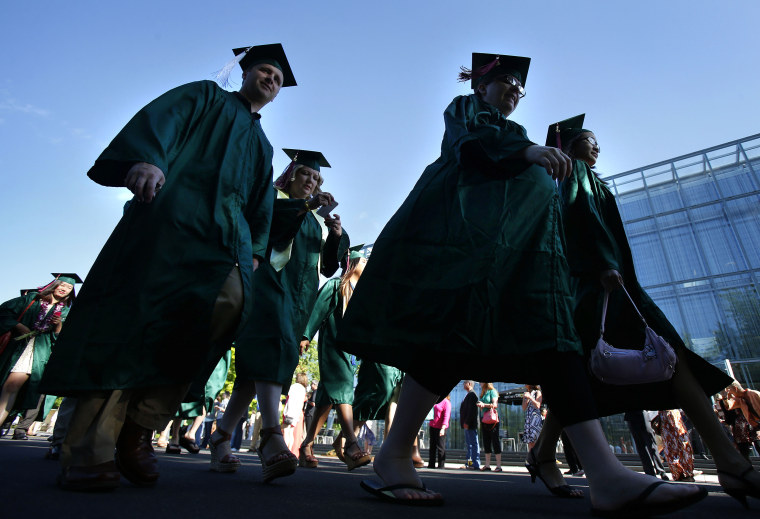Asian-American students face the largest gap between what they must pay for college and the financial resources available to them, a new study has found.
The December study examined Department of Education data for the 2015-2016 academic year and looked at "unmet need," a measure of the "gap between the cost of college and all student resources that do not need to be repaid."
It found that while the average low-income student at a public four-year university had unmet need of $12,792, the average low-income Asian-American student at those schools had unmet need of $16,756.
The trend held consistent no matter the student’s income level or the type of school attended, according to researchers at the Washington-based Center for Law and Social Policy (CLASP), though the size of the gap varied.
The study also found that nearly three in four students across overall had unmet financial need, a 23 percent increase compared to the 2011-12 school year. At four-year public universities, 75 percent of all students had unmet need, compared to 79 percent of Asian-American students.
“If you are looking at the prevalence, then I would say black students have the most unmet need,” Lauren Walizer, senior policy analyst at CLASP, said. “But certainly in dollar figures across the board … Asian-American students have the most dollar value on that need than every other race.”
For example: Low-income Asian Americans — defined in the study as dependent students whose combined earnings with their parents were less than $27,900 and independent students whose earnings were less than $7,200 — came up short by $8,507 at two-year community colleges, compared to $6,903 for the average similar student. Similar Native American students came in second with $7,073 of unmet need.
Duy Pham, a research assistant with CLASP, said it is difficult to identify the underlying causes of the gap or what happens to students “without better data.”
One possible reason is that while average income for Asian Americans is comparable to whites, “the highest earning Asian Americans have higher incomes on average than the highest-earning white, but low income Asian Americans are poorer” than low-income white counterparts, Pham wrote in a blog post accompanying the study.
Still, this could be just “one of the seven or eight or 20 reasons” for the large monetary amount of unmet need for these students, according to Walizer.
Having “disaggregated” data, data broken up by country of origin, could help pinpoint which particular Asian-American groups have the most unmet financial need and why, researchers say.
Ellen Wu, a professor at the University of Indiana-Bloomington and author of “The Color of Success: Asian Americans and the Origins of the Model Minority,” said that “Asian American” was “such a broad demographic category” that data about the group leads to imprecision.
“By disaggregating data, we can get a clearer picture what these communities are experiencing, the challenges they face, and better problem solving,” Wu, who was not involved in the CLASP study, added. “And that leads to better use of resources."
Analysis from AAPI Data, a data disaggregation project at the University of California, Riverside found that Southeast Asian Americans in general have higher poverty rates than other Asian-Americans groups and the U.S. as a whole.
But that information is not enough to look into the unmet student need, Walizer said, due to its limited scope.
The large amount of unmet need could also be due to a combination of Asian Americans generally living in states with higher costs of public education or going to more expensive universities, Walizer noted.
She added that the gap could also be attributed to sub-groups within the Asian-American community, particularly lower income Southeast Asian Americans, not being able to access certain types of aid because they simply are not told they are available.
Inequities within these aid programs are also a problem, Walizer said. Whether a form of financial aid is need-based or merit-based and how students apply or are automatically considered can “direct aid in a way that the students most in need of that aid don't get it,” she said.
Pham added that the study found points to a bigger issue: the model minority myth.
This assumption, which “portrays Asian Americans as a whole as a monolithic group that's really high achieving,” Pham said, is simply not true.
Wu, the professor, noted that financial aid policies are made by people, so if “there are actual people who set the policies, and if these people come in thinking that 'oh this whole group of people 'Asian Americans' are all doing fine, right? They can all afford higher education' when that's obviously not true.”
She added, “These assumptions and stereotypes that people believe to be true may then translate to policies that ultimately limit the reach of financial aid.”
Follow NBC Asian America on Facebook, Twitter, Instagram and Tumblr.



